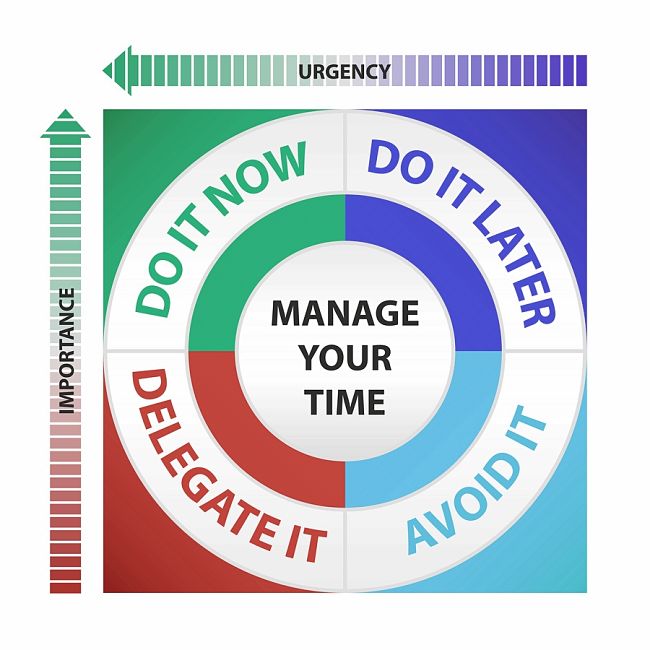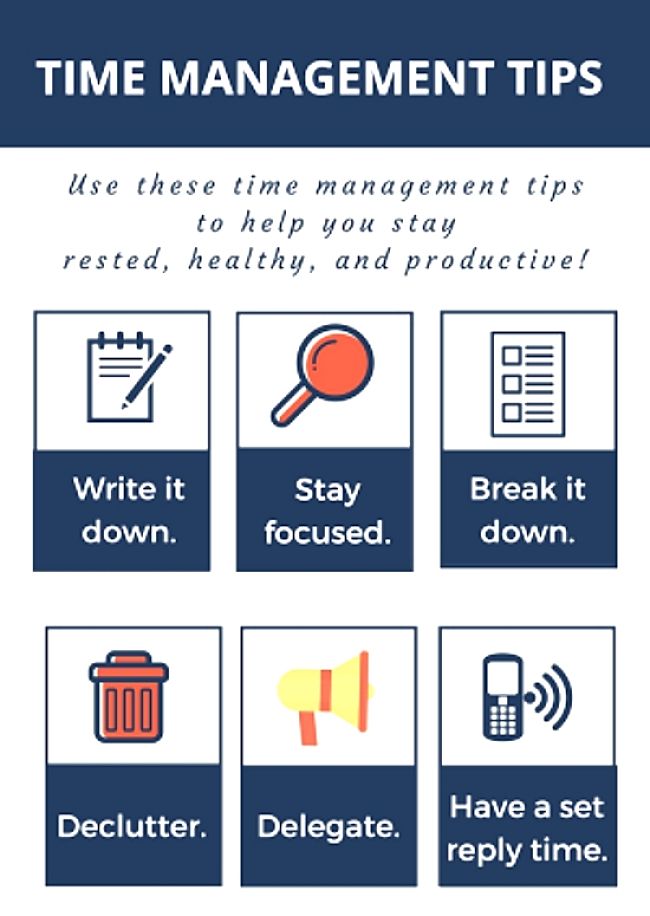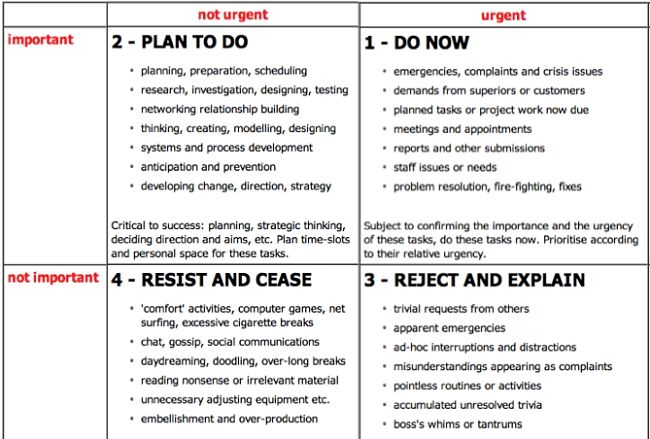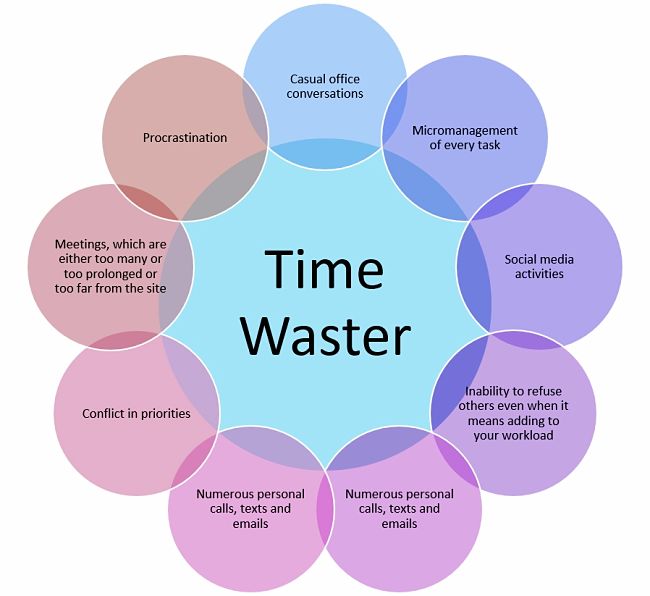Simple Time Management Tip - Use Stacks of Sticky Notes
There has been a lot written about time management. There's GTD, ZTD, Auto Focus, To Do Lists, and lots of phone apps, PC software and heaps of online tools and other stuff. But who has time to read and apply these tools. Most of them are time wasting High-Tech traps.
In many cases the users of these tools end up being the slaves to this technology and get bogged down wasting lots of precious time entering and editing the stuff. The 'tail ends up wagging the dog'.
There has to be a simpler way. Well there is! The method I use is an extremely simple and effective method using sticky notes organised into a stack. I call it Post-It Task Stacks. Its the PITS!
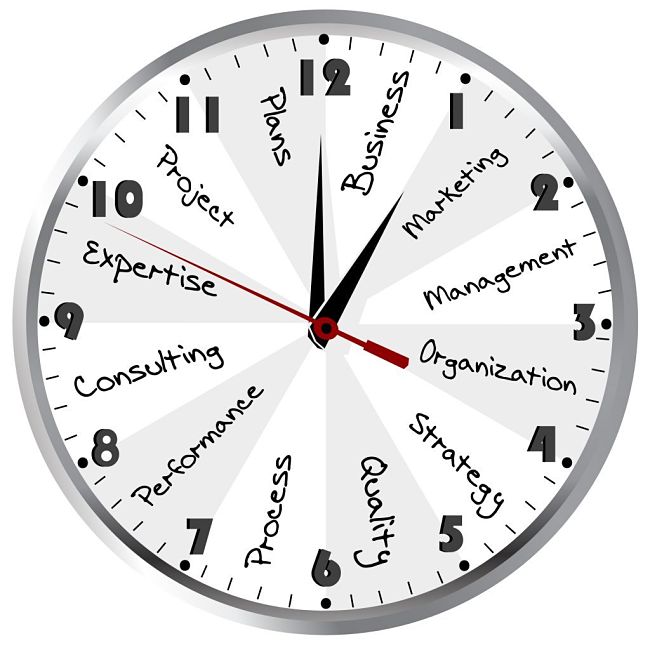
What are the Five Key Elements for Effective Time Management
- Write things down as you think of them, add them to your to do list, and then forget about them until you need to do them.
- Keep to a strictly limited list of 10 tasks (or 5 say) - with a reserve list. New items can only be added as tasks are completed, or by replacing of the priority tasks. Keeping to 10 active ones stops the clutter and worry about all the other stuff you have to do. Just focus on the Top 10 or Top 5 each day. (These are natural numbers you can count!)
- Allocate the bare minimum time for the task - learn to do things faster - don't stress about it - don't waste time by doing it better than what is required. Allocate the time needed once, and don't change it. Only allocate the time required to do the job - not a start and end time. You have calendars of appointments to deal with these times and schedules.
- List the tasks in priority order - with the Major Tasks first and make sure you do them. List the minor chores for late in the day when you may be tired and unable to do the big ones. Don't procrastinate or postpone - If ithe task is next on the list do it! Just do It!
- Do one task at a time - focus completely on that, eliminating all distractions - don't multi-task.
Method
All you need are Sticky-Note Pads or Post-it Notes (the paper variety) and a pen. Thar's It!
- At the start of each day write down a list of tasks - one to each note. Start with a heading - jot down the subtasks and work out how much time you want to devote to that task. The total time should be added to the heading. These are major tasks - not trivial chores. You want the 'gang of ten' to be what you want to achieve in a day. You can add dot points as a reminder of the sub-tasks required to finish the job.
- Spread the notes out on a table in front on you. Pick them up in the order you want to do them, adding the second, third etc. to the bottom of the stack. Count them as you go. When you get to ten, stop and start a new list - the 'reserves bench'. Keep this to a maximum of 10 as well. Stop at this point - you can't handle anymore. You could use different colours for various type or tasks or for the reserves, but keep it simple.
- The stack of notes can be simply carried in your pocket or phone case.
- During the day you work through the tasks in your stack from the top to the bottom. If you think of something or another task crops up - write it done on a note and add it to the bottom of the pile. If the new task is high priority - start it after you have completed the task you are working on - add the new note to the top of the pile.
- Reward yourself, by not adding new tasks as complete the ones on the top, so that you can see the pile getting smaller. Reward yourself with a short break as you finish each task. If you finish early, take an extra break. Try to get them all done before the end of the day or within the time allotted for each of them.
- At the start of the next day, you take the list of tasks you have not completed, spread them out as described previously - add the reserves tasks and any new one that have cropped up. Make a new top10 priority stack and a reserves stack.

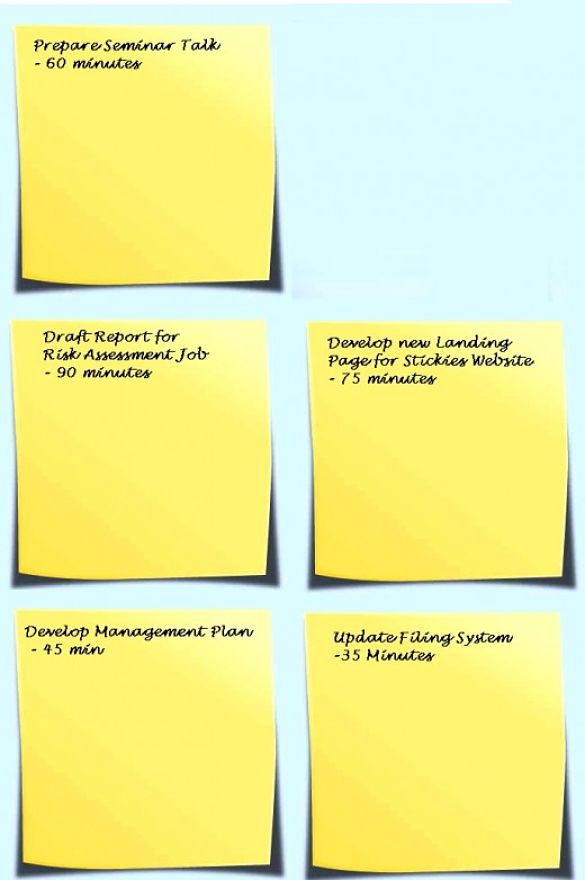

Advantages of this Simple System
- You have a priority list which has a size limit. You have to avoid the 'expander job' trap where you end up with 20, 50 or 50 tasks that simply grows and grows. Stick to 10 or a smaller number. You can only add a task by dropping one already on the list back to the 'reserves bench'. This avoids the confusion of task overload.
- You clearly focus on the tasks one a time. The other tasks are hidden - which is a good idea. If you have a written list with all the tasks on the page you will always be tempted.
- When you do each task, the others are hidden. Clear away all distractions and focus on doing that one task only, and you will find you will do a better job and don't multi-task.
- You allocate the time once and once only - Try to be realistic but don't waste time 'over-doing' the job. You have it written on the note for each task and so you do not have to worry about it throughout the day.
- It is extremely simple and you don't end up wasting time with the technology.
- It focuses on getting the jobs done as efficiently as possible in priority order.
- Weekly, monthly and yearly goals can be incorporated into this system but only as tasks - it is not about goal setting and management.
- It is focused on doing the big things FIRST, doing the tough things FIRST and not skipping over things you don't want to do or procrastinating.
- It clarifies, focused and un-clutters your thinking. You do things just in time. You do things in priority order. Of you think of a new task you jot it down and then move on. Your brain is not cluttered with things you know you have to do. You think about the task once and set a time interval for it, add it to a note and you're done - you don't have to worry about it until it surfaces on top of the stack.
- You do one task at a time without distraction.
- You're not tied to a schedule or a timetable - you need to be more flexible than that. This to do list is separate from a calendar or schedule of meetings. Use other tools for that.
- The stack is better than a set of cards (you can't drop them and lose the order) - as it is easier to keep the sequence and you are forced to only consider the tasks one at a time.
- You can review and set your priorities weekly and you can incorporate weekly or monthly tasks into it.
- It prioritises your goals and tasks to the major essentials - Forget about the things you simply cannot do or don't have time to do.
- It helps sets and keep routines, and helps you develops good time management practices. You can incorporate deadlines into the system.
- It encourages you to take regular breaks as you finish each task, and rewards you for finishing early - take an extra long break.
- It develops the habit of setting strict time limits for tasks, but encourages you to take a break between tasks which are done in an ordered list and sequence.
If you must there are electronic sticky notes that can be run on your computer.
